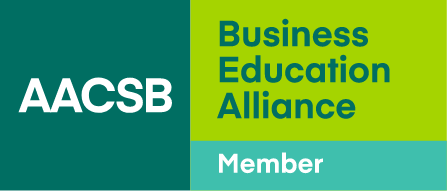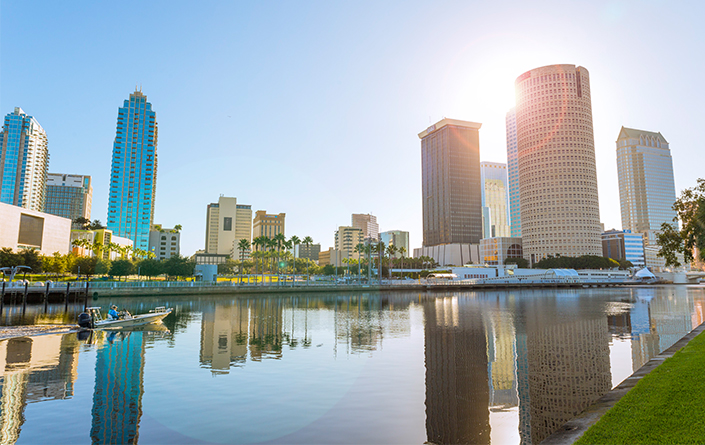How to Write an Impactful Sustainability Report
A growing number of business schools are producing reports that explore how they are integrating sustainability issues into their strategies, curricula, research, and operations. Such documents can be important tools that communicate where schools stand, where they’re going, and why their efforts matter. Reports also can show internal and external stakeholders how they can engage with a school’s ongoing efforts.
“A sustainability report is important because what gets measured gets done—and improved!” says Sukhbir Sandhu, associate professor in sustainability and ethics at the University of South Australia’s Business School (UniSA) in Adelaide. “A report provides a school with a chance to understand and carefully analyze its commitment to the United Nations’ Sustainable Development Goals (SDGs). It opens an opportunity for dialogue and partnerships, and the feedback enables the school to work toward continuous improvement.”
If you’re thinking about creating a sustainability report for your school, view it as a societal impact business card. But keep in mind that producing such a document is a resource-intensive task. Therefore, you should not simply focus on what the final report looks like, but also consider how you will use it after it’s finished. Here are a few things to think about as you plan.
Identify Your Target Audiences
The effectiveness of your report will be shaped well before you put anything on paper. What you choose to include will depend on who your intended audience is, how you approach the topic as a school, and what reporting requirements you may have. Therefore, take time to consider why you are chronicling your sustainability progress and who might want to know about it.
“One of our challenges is to write a document that can be used as input for different types of reporting—for example, voluntary initiatives and accreditations that require we report on sustainability,” notes Kim Ceulemans, associate professor of management control and sustainability at Toulouse Business School in France. “In the future, we would like to find a way to gather all the requirements of the different organizations in one single report.”
In other words, ask yourself, “If I were a student, potential student, staff member, or external stakeholder, would this report provide a good overview of what is happening and make me want to get more involved in the initiatives listed?” Write your report with purpose.
“Reporting does need someone to drive the process,” says Jill Bogie, an adjunct faculty member at the Gordon Institute of Business Science at the University of Pretoria in South Africa. According to Bogie, a meaningful report will accurately reflect “what the organization does, rather than cherry-pick a few good stories.”
To assemble such a comprehensive report, you will need input from every department and function at the school. You could even engage students in the process of researching, designing, and disseminating the report—something few schools currently do.
Set the Scene
Use the first few pages to highlight key messages and summarize what has happened since your last report. Include any letters from management and sustainability teams. Avoid vague statements about making commitments; instead, use this section to explain why sustainability is important to the institution and what you are doing about it.
Avoid vague statements about making commitments; instead, use this section to explain why sustainability is important to the institution and what you are doing about it.
Don’t assume your readers know how you define sustainability. Include information on how you approach the topic, how you are embedding it into the school, and who is driving key initiatives. These opening pages will set the tone for the rest of the document.
Dive Into the Details
The bulk of your report will provide specifics about what your institution is doing. School leaders often find that more is happening in their communities than they expected. Therefore, your challenge might not be determining what to include, but deciding what to leave out.
“Be specific about what you have done rather than describe what you should do or will do or are planning to do,” says Bogie. “Certainly, you should set targets, but what you report should be verifiable.”
Your report should include, but is not limited to, updates in these areas:
- Curriculum. How is sustainability integrated into the classroom, not just in electives, but in core courses? How are faculty and students supported in this effort? For example, does the school offer training?
- Research. How are your faculty exploring sustainability in their research? What kind of impact is the research having?
- Partnerships. With whom are you working and on what projects? Why are these collaborations important?
- Dialogue. How do you engage your community in your sustainability initiatives?
- Operations. How do you translate the SDGs into your own operations? How are you walking the talk?
Create an Attractive Package
Producing compelling content is only half the battle. Many readers will first judge the report by its cover, so make sure the whole package is well-designed. It doesn’t have to be fancy to be good, but it does need to be easy to read.
It’s better to highlight a few examples of your sustainability initiatives and provide additional details on those. Readers will remember the stories, not the lists.
Use the formatting to highlight the content rather than overwhelm it. Stay on track and don’t include additional information that distracts the reader—for example, avoid long lists of every sustainability-related activity at the school. If these lists are needed, include them in appendices at the end or provide links for more information.
It’s better to highlight a few examples of your sustainability initiatives and provide additional details on those. Readers will remember the stories, not the lists.
Get Your Report From Good to Great
Two elements make a report more impactful:
Goals and targets. Include these throughout the report, and also outline the goals and targets you’ve set for the next reporting period. “At UniSA Business, we use stakeholder feedback to develop our goals with clear accountability in terms of when these goals will be achieved, by whom, and how,” says Sandhu. “This ensures that the report becomes a focused plan of action.”
Reflections and challenges. Celebrate your successes, but also reflect on goals that weren’t reached or challenges you are trying to overcome as an institution. Engage the reader by asking thoughtful questions: How can we bring about change as a sector? What would this change mean for the institution? For society?
Make It Unique
While a growing number of organizations provide some guidance for how schools should report on sustainability, there is no generally accepted standard. For that reason, you have the flexibility to create a report that makes sense for your stakeholders and that clearly communicates who you are.
Get inspiration by looking at other reports, because every institution and every region will have its own reporting “culture.” While some reports will focus more on metrics, others will share stories of impact. Assess which approach seems true to your own school’s story.
Ultimately, don’t write the report you think you should be presenting to the world. Write the report that accurately and honestly represents your institution and the work your community is doing.
Bring It to Life
Too often, sustainability reports sit on tables in reception areas and are forgotten. To make sure that doesn’t happen to your project, take the time to think about how you will share it when it’s finished.
Engage stakeholders in communicating different messages from your report to segmented audiences. Create videos for your website, present information at events, share nuggets over social media, and design radio and print ads. Contact the press and highlight specific examples that would be of interest to wider audiences. Create informative one-page press releases that are based on information in the report and aimed at specific audiences. Bring the document to life and live it.
A report provides an excellent opportunity for a school to engage in further sustainability efforts and to discuss its initiatives with the whole community. But a school must put in the time and effort to get the report right.
As Bogie puts it, “A good sustainability report is not created from a big budget and a great design. It comes from teamwork, genuine dedication to integrating the SDGs into organizational activities and processes, and improvement over time.”
For more on how business schools are embedding sustainability, follow Giselle’s List, a weekly curated list of ideas and resources.





